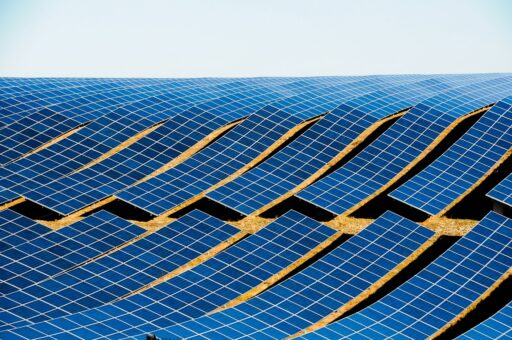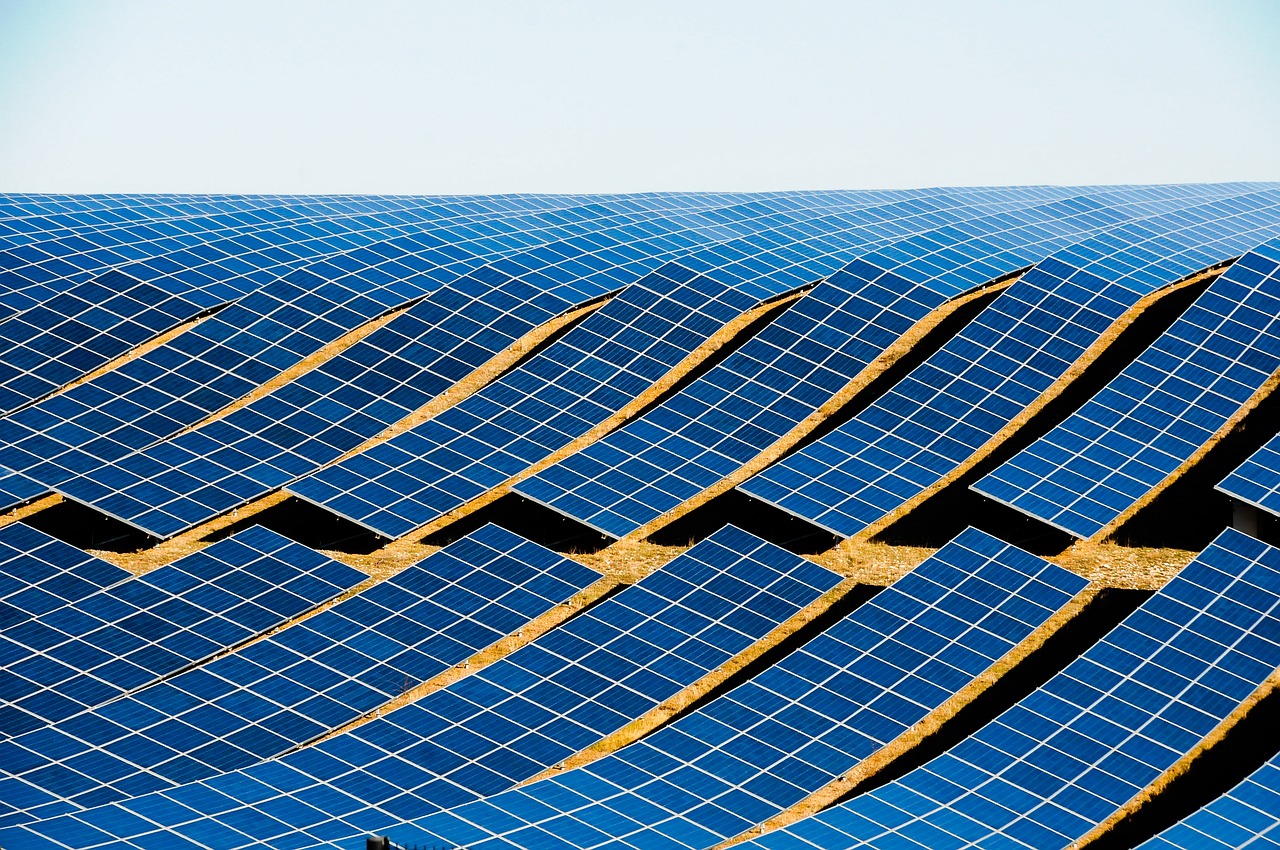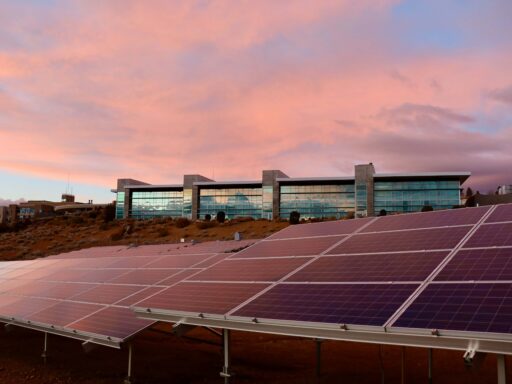Installers want clear, comparable information about each solar panel brand before they commit. This guide compiles the top solar panel manufacturers, ranks the leaders by power shipments, and explains which company profiles are best suited for different project types.
We also cover where solar panels are made, which countries dominate manufacturing, and how to select a trustworthy manufacturer for your project.
What are the best solar panel companies?
To keep this practical for EPCs and procurement teams, each profile below follows a consistent format: full company name, country of origin, year founded, key products and technologies, a recent production or shipment note, and notable achievements that impact specifications.
Treat these snapshots as a starting point for due diligence with your chosen distributor or channel partner; use them alongside a quick solar panel efficiency comparison and your site constraints.
Aiko Solar – ABC back-contact efficiency leader
- Full name & origin: Shanghai Aiko Solar Energy Co., Ltd. (AIKO) — China; founded 2009.
- Key products & technologies: N-type ABC (All-Back-Contact) modules (no front busbars) aimed at premium residential and C&I.
- Recent volume: Aiko is among the top global shippers and was recently cited as fifth in the first half of the year.
- Notable: Winner of the Intersolar AWARD 2023 for ABC modules; efficiency leadership highlighted in the media for commercial module series.
Trina Solar – global reach and technological records
- Full name & origin: Trina Solar Co., Ltd. — China; founded 1997.
- Key products & technologies: Vertex / Vertex S solar panels, n-type TOPCon, bifacial, half-cell formats for residential, commercial, and utility.
- Recent volume: Consistently among the top four by global solar panel shipments in the last year/half-year.
- Notable: Multiple industry records for module power classes; broad manufacturing footprint and strong bankability in many markets.
JinkoSolar – market leader in shipments and innovation
- Full name & origin: Jinko Solar Co., Ltd. — China; founded 2006.
- Key products & technologies: Tiger Neo solar panels (n-type TOPCon), bifacial and high-conversion options with rapid product cadence.
- Recent volume: At or near #1 by shipments in the most recent periods; multi-tens of gigawatts delivered.
- Notable: Frequent roadmap updates focused on higher power density; ongoing manufacturing and factory investments.
LONGi Solar – monocrystalline technology pioneer
- Full name & origin: LONGi Green Energy Technology Co., Ltd. — China; founded 2000.
- Key products & technologies: Hi-MO solar panels; monocrystalline leadership with n-type TOPCon and back-contact lines.
- Recent volume: Among the largest solar panel producers worldwide, with significant shipments year on year.
- Notable: Vertically integrated from wafers to modules, with some of the most powerful solar panels used in utility portfolios.
JA Solar – high efficiency PV solutions
- Full name & origin: JA Solar Technology Co., Ltd. — China; founded 2005.
- Key products & technologies: DeepBlue solar panels (including n-type TOPCon), half-cell architectures across mainstream formats.
- Recent volume: One of the top manufacturers by module shipments across recent annual and half-year periods.
- Notable: Strong project references across many countries; credible roadmaps and reliable supply.
Qcells – major American-market producer
- Full name & origin: Hanwha Q CELLS Co., Ltd. — Germany/Korea/USA; founded 1999.
- Key products & technologies: Q.PEAK DUO solar panels, half-cell and advanced interconnect designs; growing US manufacturing base.
- Recent volume: Double-digit gigawatt module capacity with increasing American plant output.
- Notable: Emphasis on regional manufacturing outside China; strong channel presence with North American solar power companies.
Canadian Solar – leading non-Chinese manufacturer
- Full name & origin: Canadian Solar Inc. — Canada; founded 2001.
- Key products & technologies: HiKu solar panels (p-type and n-type), bifacial options; integration with storage and project development.
- Recent volume: High, multi-GW shipments over the last year; diversified manufacturing across several countries.
- Notable: Recognised among top solar panel companies; balances module production with downstream projects.
Tongwei Solar – polycrystalline silicon giant
- Full name & origin: Tongwei Solar (Tongwei Co., Ltd.) — China; founded 1984 (group).
- Key products & technologies: Vertically integrated polysilicon, cells, and solar panels; aggressive n-type cell roadmaps.
- Recent volume: Rapid growth in cell and module deliveries, supplying multiple global solar panel manufacturers.
- Notable: Significant influence on upstream pricing; often cited by PV manufacturers as a strategic partner. (tongwei solar)
Astronergy – focused on utility-scale projects
- Full name & origin: Astronergy (CHINT New Energy) — China; founded 2006.
- Key products & technologies: ASTRO N solar panels (n-type TOPCon), bifacial modules optimised for utility arrays.
- Recent volume: Multi-GW shipments with expanding utility pipelines across several regions.
- Notable: Recognised among leading solar manufacturers in tenders, with a competitive levelised cost of energy.
Risen Energy – mid-tier global challenger
- Full name & origin: Risen Energy Co., Ltd. — China; founded 1986.
- Key products & technologies: TITAN solar panels, PERC and n-type options, half-cell formats.
- Recent volume: Multi-GW module shipments; established brand presence across many countries.
- Notable: Known for value-driven bids and improving BOS fit at higher power classes.
DAS Solar – rising star in lightweight PV modules
- Full name & origin: DAS Solar Co., Ltd. — China; founded 2018.
- Key products & technologies: n-type TOPCon solar panels, lightweight designs, strong conversion rates for rooftops.
- Recent volume: Fast module shipment growth in the last year/half-year.
- Notable: Frequently listed among the best solar panel brands to watch; expanding capacity. (das solar)
GCL Solar – powerful panels and storage solutions
- Full name & origin: GCL System Integration Technology Co., Ltd. — China; founded 2003.
- Key products & technologies: GCL solar panels; integrated storage solutions and project services.
- Recent volume: Multi-GW output with ramping plant utilisation.
- Notable: Part of a broader group with materials expertise; active across several countries. (gcl solar)
First Solar – thin-film leader
- Full name & origin: First Solar, Inc. — USA; founded 1999.
- Key products & technologies: CdTe thin-film solar panels known for hot-climate behaviour and stable output.
- Recent volume: Large utility-scale deliveries in the last year; expanding US and global manufacturing sites.
- Notable: Non-silicon technology with low embodied energy; strong bankability in utility and policy-aligned markets.
Which countries produce the most solar panels?
China produces the majority of solar panels, followed by Southeast Asia (including Malaysia, Vietnam, and Thailand), with growing capacities in the USA and India. These countries dominate manufacturing due to their integrated supply chains, large factory clusters, and policy support.
If you ask “where are solar panels made?”, the practical answer is: mostly China/Chinese-owned plants, with production increasingly diversified to new country hubs.
For tender planning, map potential assembly locations against customs timelines and holiday calendars, then build a small buffer into the schedule to account for any delays. Place-of-origin rules vary by jurisdiction, so confirm how certificates will be recorded to distinguish between assembly and cell origin to avoid delays at commissioning.
China’s share remains dominant due to the presence of clustered suppliers of wafers, cells, glass, backsheets, and logistics, which compress costs across the value chain. Southeast Asia hosts major contract lines owned or partnered by Chinese groups, helping brands serve tariff-sensitive markets.
In the US, incentives have lifted domestic module capacity, while India’s programmes are building upstream capability; the EU is encouraging local build-out, albeit at a slower pace.
Because modules can be assembled in one location using cells or wafers from another, analysts often group output by region rather than by a single country. When screening tenders, note whether a bid comes from Chinese solar panel brands or from regional lines outside mainland China; either can be competitive depending on timing and policy.
What are the largest solar panel manufacturers in 2025?
Shipment league tables for 2024/H1 2025 typically place JinkoSolar, LONGi Solar, Trina Solar, and JA Solar among the top positions by solar panel volume, with others close behind.
Together these brands account for a large share of global shipments, reflecting consolidation and scale in solar manufacturing. The top four’s combined share continues to rise, showing how advantages in upstream materials and automation translate into lower unit costs and faster product refreshes.
Outside the top four, Canadian Solar, Risen, Astronergy, and DAS Solar remain important suppliers in specific regions. Because shipment tables measure branded deliveries (not always in-house cell output), treat them as indicators of market reach rather than absolute manufacturing might.
For finance teams, brand concentration reduces counterparty risk but can create exposure to a small set of suppliers—keep an approved list that includes at least one regional alternative.
How to choose the best solar panel brand for your needs?
Match the solar panel to the project and BOS: footprint, weight, clamp zones, current/voltage, and inverter MPPT windows. Compare temperature behaviour, degradation terms, and warranty language; then weigh logistics, price stability, and local support.
For procurement teams, add three checks before a purchase order:
(1) Confirm serial-level traceability on pallets and cartons.
(2) Capture handling notes (glass thickness, frame lip, clamp zones) in the method statement.
(3) Pre-agree RMA steps and timelines with your channel. If you work across multiple regions, consider dual-sourcing; pair a scale brand with a regional specialist to cushion allocations.
Finally, log year-one site data (kWh, temperature, irradiance) and compare against assumptions. Feedback improves future selection and strengthens the next framework agreement. When speaking with solar panel suppliers or solar equipment suppliers, request recent reliability reports and component disclosures.
A single page that lists materials and components helps you verify claims quickly with your solar energy equipment supplier or preferred solar panel distributors.
Future trends in solar panel manufacturing
Expect more n-type TOPCon and back-contact designs, larger wafer formats, and higher power bins in mainstream solar panels. Manufacturing will diversify outside China as policies evolve.
PV manufacturers will continue to automate, refine interconnects, and strengthen frames to maintain output under mechanical stress. Some labs are piloting perovskite-silicon tandems for future cycles.
In the near term, manufacturers will emphasise process control and transparent reliability tests. Watch for “best solar panels 2025” lists that bundle premium solar panels and claim the most powerful solar panels—always map datasheets to real-world projects.
Another thread is supply transparency: buyers increasingly ask for material disclosures (glass, junction boxes, encapsulants) and lifecycle detail such as embodied carbon and recycling compatibility. Expect clearer labelling of salt-mist and ammonia resistance, PID/LeTID mitigation, and design tweaks that protect yields on windy or snowy sites.
Digital support will also improve, with better fleet portals, standardised alerts, and APIs that feed monitoring into asset dashboards. On logistics, sturdier packaging, smarter pallets, and clearer lift points reduce site damage and speed installation. All these marginal gains compound; together they deliver steadier kWh and smoother handovers without changing the core layout.
FAQ – solar panel manufacturers
Who is the largest solar panel company in 2025?
Tables for the last year/half-year often show JinkoSolar at or near #1 by shipments, with LONGi, Trina, and JA close behind (top solar panel companies).
What are the best solar panel companies to buy from?
Shortlist Trina, LONGi, Jinko, JA, and Canadian for bankability and availability; add regional leaders like Qcells and First Solar where applicable (best solar energy companies; best solar panel company).
How can I identify a high-quality solar panel brand?
Look for transparent manufacturing data, independent tests, and clear warranty terms from the company; check the Tier 1 solar panel manufacturers’ lists and ask for recent field performance.
Are Chinese solar panel companies leading the global market?
Yes—Chinese manufacturers dominate shipments and manufacturing scale, though US, India, and EU capacity is expanding to compete with China solar panels and Chinese solar panel brands.
Where are most solar panels manufactured in the world?
Mostly in China and Chinese-owned plants in Southeast Asia; the US and India manufacture growing volumes (where are solar panels made).
Which countries have the largest non-Chinese solar panel companies?
The USA (First Solar), Canada (Canadian Solar origin), Germany/Korea/USA (Qcells), and Norway/Singapore (REC) host notable companies.
What factors should I consider when choosing a solar panel company?
Match module power and conversion rate to your layout, verify service and logistics, confirm warranty details, and cross-check with solar panel manufacturers and solar module manufacturers in your region.
 EN
EN ES
ES DE
DE PL
PL IT
IT FR
FR GR
GR



